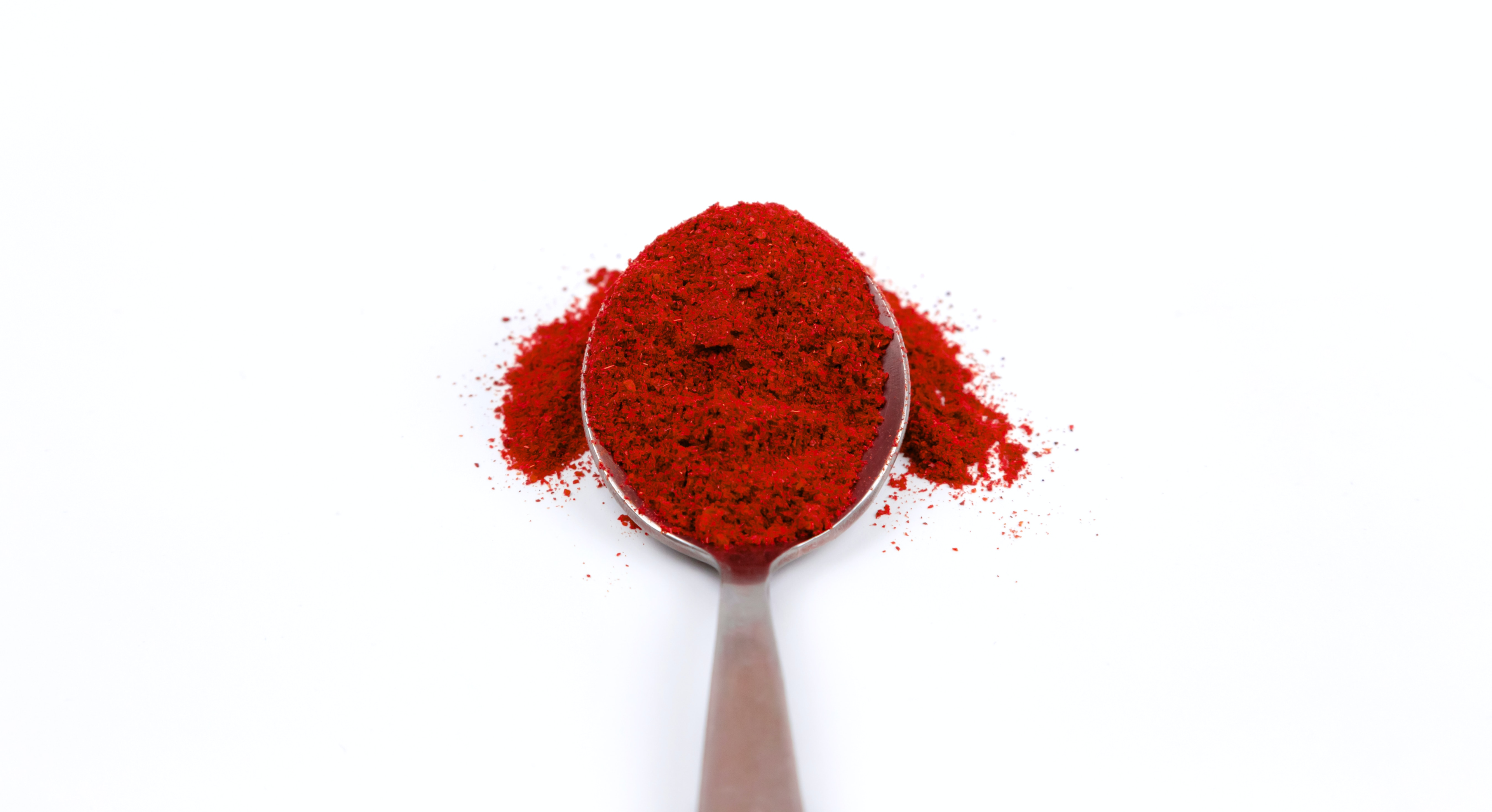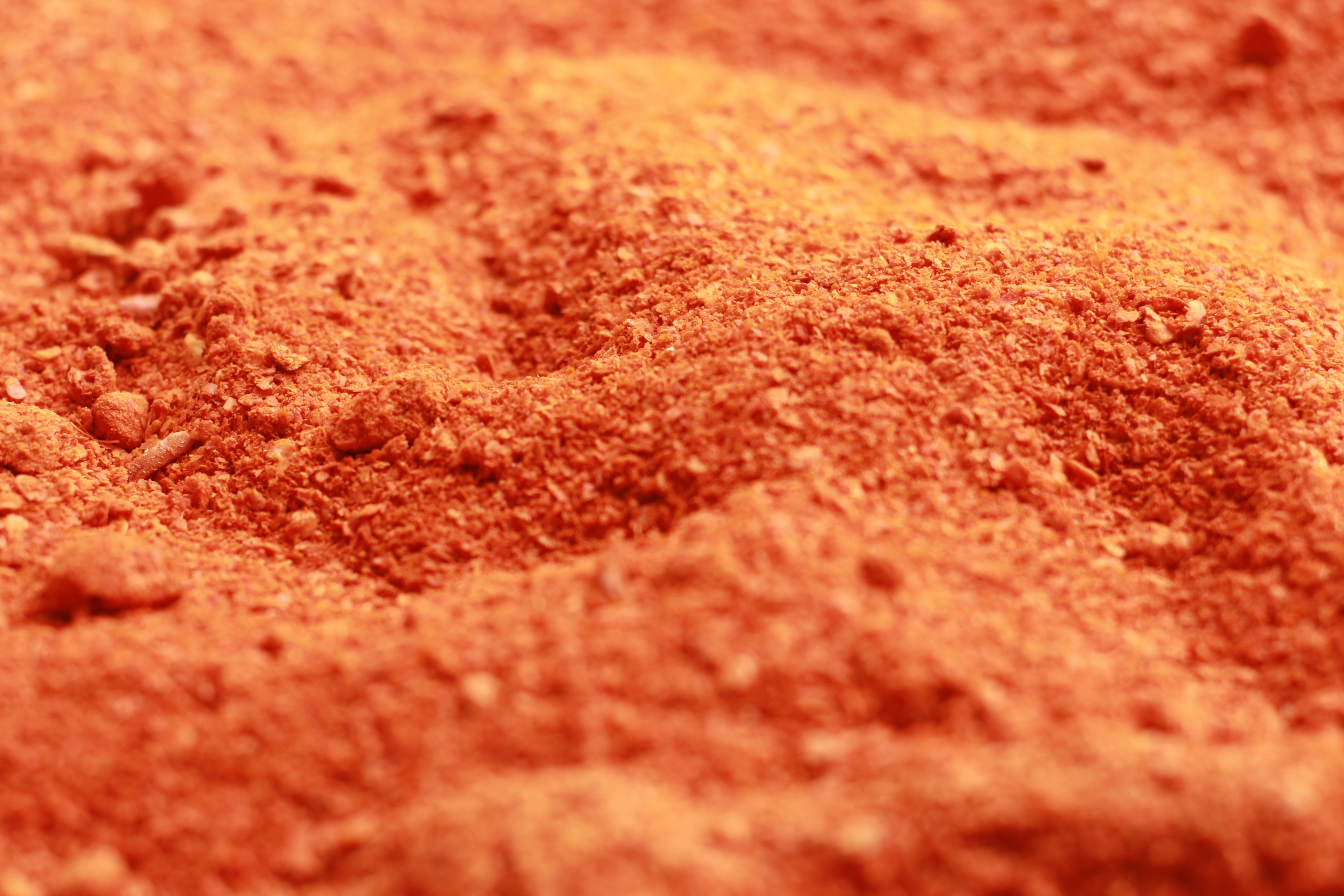Vegan Globetrotter is supported by our audience. When you purchase through one of our links, we may earn a small affiliate commission. As an Amazon Associate I earn from qualifying purchases. Your cost is not affected.
==================
Paprika Health Benefits: Unveiling Its Nutritional Impact
Paprika, recognized for its vibrant color and warm, mild flavor, is more than just a culinary staple since paprika benefits are abundant. This ground spice, derived from red peppers, packs a nutritional punch, boasting a range of vitamins, minerals, and antioxidants. Among these beneficial compounds are vitamin A, known for its vision and immune-boosting properties, and vitamin E, which plays a role in maintaining skin health.

Photo by Volodymyr Hryshchenko on Unsplash
While paprika is often used to season or garnish dishes, its potential health benefits extend beyond its culinary uses. Research suggests that the carotenoids, such as beta-carotene and zeaxanthin, found in paprika may support eye health. Additionally, the presence of capsaicin, although in smaller amounts compared to other chili peppers, appears to have anti-inflammatory and pain-relieving properties. The spice has been studied for its role in reducing inflammation, relieving pain, and potentially improving cholesterol levels and blood circulation.
Key Takeaways
- Paprika contains vitamins A and E, supporting vision and skin health.
- Its carotenoids and capsaicin may reduce inflammation and improve circulation.
- Paprika is versatile in cooking and can be used for seasoning and garnishing.
Nutritional Profile of Paprika
Paprika boasts a rich composition of essential nutrients, including various vitamins and minerals. It also contains beneficial antioxidants, while its caloric value is relatively low, making it a healthy addition to many dishes.
Vitamins and Minerals
Paprika is an excellent source of vitamin A, with significant amounts contributing to daily dietary needs. It also provides essential vitamin E, vitamin B6, and iron. Minerals found in paprika, such as calcium, potassium, and phosphorus, support bone health and overall bodily functions.
Antioxidant Content
The vibrant red spice is high in antioxidants, particularly carotenoids such as beta-carotene, which the body can convert into vitamin A. Antioxidants play a crucial role in protecting cells against damage from free radicals.
Caloric Value
Paprika has a low caloric profile, providing around 19 calories per tablespoon, with less than 1 gram each of protein and fat. This makes it a flavor-enhancing option that does not significantly increase the calorie count of dishes.

Photo by OWN FILTERS on Unsplash
Potential Health Benefits
Paprika, a spice derived from dried, ground bell peppers or chili peppers, offers several health benefits substantiated by scientific research. It is rich in vitamins, and antioxidants, and may contribute to a range of health improvements.
Anti-Inflammatory Properties
Paprika contains compounds such as capsaicin and beta-carotene, which have been shown to reduce inflammation in the body. This could be beneficial for those with arthritis or other inflammatory conditions.

Photo by Alan Calvert on Unsplash
Supports Digestive Health
Regular consumption of paprika may aid digestion by increasing saliva and stomach acids, which help in breaking down food and absorbing nutrients effectively.
Promotes Heart Health
The antioxidants present in paprika, such as vitamin C and capsaicin, may help in preventing heart diseases by reducing bad cholesterol and improving circulation.
Enhances Immune System
Paprika is high in vitamin A, which is essential for maintaining healthy mucous membranes, thus enhancing the body’s barrier against infections.
May Improve Blood Sugar Control
Studies suggest that the capsaicin in paprika may have a positive effect on blood sugar levels, making it a potentially helpful spice for diabetes management.
Skin and Eye Health
https://www.youtube.com/watch?v=lapeCHFZaVs&embed=true
Paprika not only adds vibrant color and flavor to dishes but also offers notable benefits for skin and eye health due to its rich content of antioxidants.
Benefits for Skin
Paprika contains antioxidants like vitamin C, which protects the skin by absorbing free radicals that can damage collagen, maintaining its firmness and elasticity. Dermatologists suggest that these antioxidants can help keep skin looking younger and more vibrant. Skin care benefits of paprika are often overlooked, but this spice may contribute to healthier-looking skin.
Eye Health Maintenance
The eye health benefits of paprika are associated with its concentration of vitamin E, beta carotene, lutein, and zeaxanthin. These components are critical in maintaining eye health, particularly in protecting against light-induced damage. Lutein and zeaxanthin, for instance, are known to filter harmful blue light, potentially reducing the risk of macular degeneration. For those looking to support their eye health through diet, incorporating paprika could be a beneficial choice. Paprika and eye health maintenance are thus closely connected.
Cognitive Benefits

Photo by Robina Weermeijer on Unsplash
Paprika is not just a culinary delight but also a harbinger of some cognitive advantages. Compounds in paprika may support brain health and enhance cognitive functions such as memory and concentration.
Neuroprotective Effects
Researchers suggest that certain antioxidants in paprika, such as vitamin E, can act as neuroprotective agents. These antioxidants help in shielding brain cells from damage caused by free radicals, possibly slowing down the progression of neurodegenerative diseases.
Memory and Concentration
The presence of vitamin B6 in paprika plays a pivotal role in the creation of neurotransmitters, which are essential for relaying signals in the brain. Adequate levels of vitamin B6 are linked to improved memory retention and the ability to focus and concentrate effectively.
Culinary Uses and Preservation
https://www.youtube.com/watch?v=r8oQIn4mjdg&embed=true
Paprika not only enhances the flavor and color of dishes but also requires proper storage to maintain its potency. Below are practical guidelines on paprika’s culinary applications and its preservation.
Culinary Applications
Paprika is a versatile spice that is a staple in various global cuisines. In Hungarian dishes, it is used to create the country’s signature goulash and paprikash. Spanish cuisine incorporates smoked paprika, known as “Pimentón,” to impart a deep, smoky flavor to chorizo and paella. Additionally, paprika can be sprinkled atop deviled eggs or mixed into marinades to provide a subtle heat and vibrant color.
Tips for Storage and Usage
Storage:
- Store paprika in an airtight container, away from heat and light.
- Place in a cool, dark cabinet to help preserve its color and flavor.
Usage:
- Add paprika near the end of cooking to prevent it from becoming bitter due to excessive heat.
- To refresh the spice’s flavor, briefly toast it in a dry pan before use, watching carefully to prevent scorching.
Photo by Brett Jordan on Unsplash
Paprika Benefits and Why You Should Try Them
Exploring the myriad Paprika benefits, this vibrant spice, renowned for its color and mild flavor, transcends its culinary role. Derived from red peppers, it not only enhances dishes but also delivers a nutritional punch with vitamins, minerals, and antioxidants. From vision and immune support with vitamin A to maintaining skin health with vitamin E, paprika offers diverse advantages. Research suggests its carotenoids may boost eye health, while capsaicin, though milder, holds anti-inflammatory and pain-relieving properties. Beyond its culinary charm, paprika’s rich composition includes essential nutrients, antioxidants, and a low caloric profile. It supports digestive health, heart health, and immune systems while potentially aiding blood sugar control. Embrace paprika for not just flavor but a holistic boost to well-being. Sprinkle, savor, and enjoy the palate and Paprika benefits it brings to your table! 🌶️
Frequently Asked Questions on Paprika Benefits
Paprika, a spice derived from bell peppers, offers a range of health benefits due to its nutrient content and bioactive compounds.
What Are the Potential Health Advantages of Including Smoked Paprika in One’s Diet?
Smoked paprika contains antioxidants, such as vitamin A and carotenoids, which may help reduce oxidative stress. The smoking process also imparts additional flavor without the need for extra salt or fat.
How Does Sweet Paprika Contribute to Nutritional Health?
Sweet paprika is rich in vitamins and minerals, providing benefits such as enhanced visual health and immune support, particularly from its vitamin A content.
Can Drinking Paprika Tea Offer Unique Health Benefits?
Drinking paprika tea might provide a warm, soothing beverage that could aid in digestion and offer the anti-inflammatory effects of its active compound, capsaicin.
What Are the Best Practices for Incorporating Paprika Into a Health-Focused Diet?
Incorporating paprika into a health-focused diet could involve using it as a seasoning for proteins or vegetables, ensuring a rich flavor profile while also gaining its antioxidative benefits.
How Does Paprika Consumption Impact Digestive Health?
Paprika may have a carminative effect, helping to reduce gas and bloating, and the spice can stimulate digestion by increasing saliva and stomach acids.
What Are the Comparative Health Benefits of Paprika and Cayenne?
While both paprika and cayenne are sources of capsaicin, paprika often contains milder compounds and vitamin A, whereas cayenne is typically higher in heat and may boost metabolism more significantly.
Related Video on Paprika Benefits
Related Articles on Paprika Benefits
Follow Our Socials
Discover the awesome world of VeganGlobetrotter! We’ve got cool stuff on different social media apps. Check out tasty recipes and travel tips on Instagram. Talk about interesting things and make friends on Twitter. Watch fun videos and learn cool stuff on YouTube. Hang out with us on Facebook for a friendly community and cool ideas. It doesn’t matter if you’re new to being vegan or you’ve been doing it for a while. VeganGlobetrotter’s social media has something for everyone who likes yummy food and cares about the planet. Follow us on all the apps for a super fun and easy way to be vegan! 🌱✈️ #VeganGlobetrotter #YummyVeganLife





Don't miss out
when new recipes and information are added!
Join our newsletter for free recipes,
healthy living inspiration, and special offers
You have Successfully Subscribed!